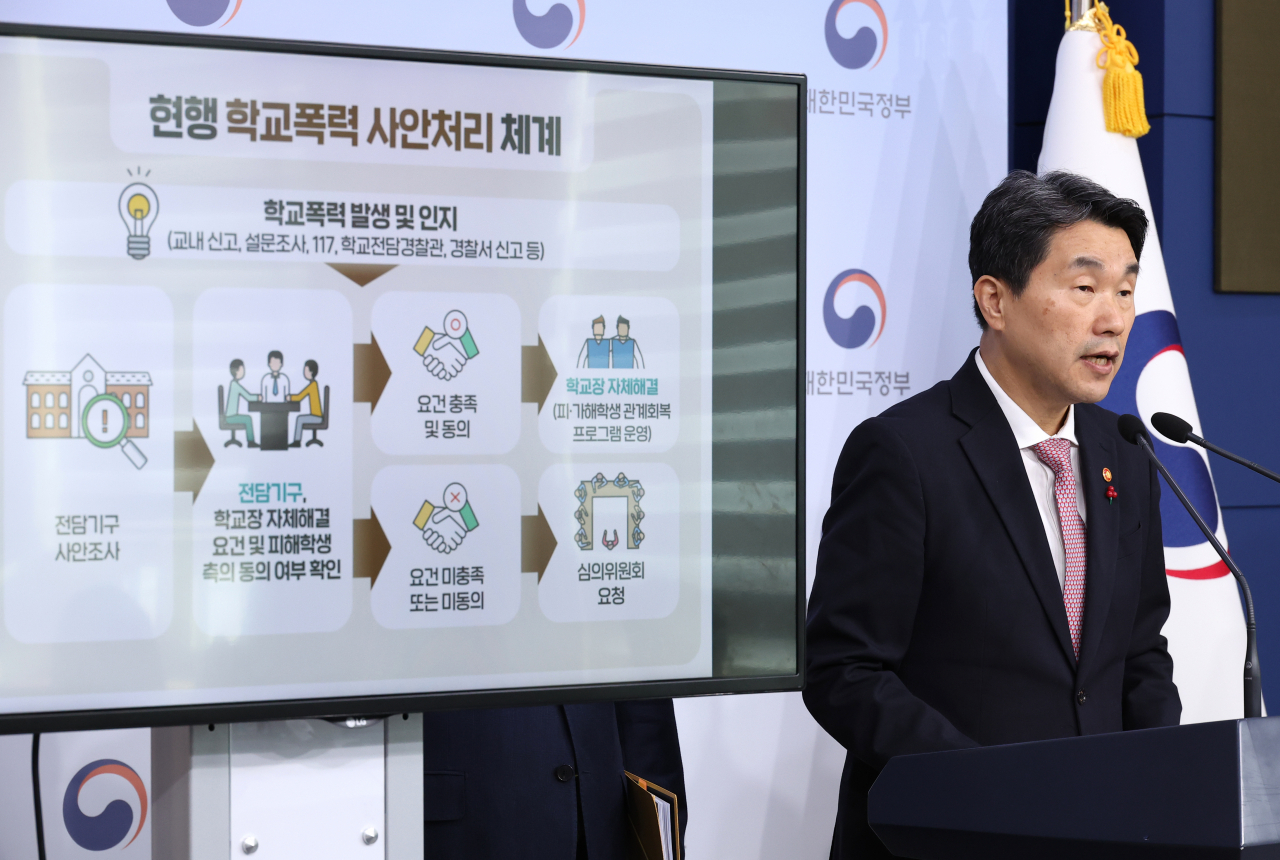
The percentage of Seoul students who said they have been victimized at school was the highest in the past 10 years, according to a recent survey.
Seoul Metropolitan Office of Education said Friday that a survey of 486,729 students between the fourth grade of elementary school and the final year of high school found that 2.2 percent had been subject to some form of mistreatment at school. The figure increased by 2 percent compared to last year, and marked a 10-year high.
South Korean law defines school violence as actions committed against students inside or outside of school that include but is not limited to: physical or mental injury, damage of property, threats, sexual violence, defamation, extortion, coercion, and bullying online or in person.
In the survey, 4.6 percent of elementary students said they were subject to school violence, while 1.6 percent of middle school students and 0.4 percent of those in high school answered likewise. The percentage of elementary school victims remained unchanged compared to last year, while the victims at middle and high school rose by 0.7 percentage point and 0.1 percentage point, respectively.
Officials suspected that the increase in school violence is due to the in-person classes being conducted, in contrast to school opting for online classes during the better part of the COVID-19-induced pandemic.
"Students are back to school after COVID-19 (pandemic), and they'd have had less chance to interact with their friends (during the pandemic). We think this leads to higher tendency toward students having more difficulty addressing conflicts, and more violence," a SMOE official said.
The percentage of children reporting school violence dropped to 1.1 percent in 2020, the first year schools were forced to conduct their classes online, from 2 percent in 2019.
The most common form of school violence was verbal abuse, 37.7 percent, followed by physical abuse and bullying from a group, respectively at 18.1 percent and 15.3 percent. About 68.8 percent of the violence occurred within the school premises, and 29.4 percent of them occurred inside a classroom.
Most of the time the perpetrators were classmates (46.1 percent), followed by those in same year but a different class (32.7 percent), 6.8 percent were by students in a different year to the victim.
In 93 percent of the cases, the victim alerted another person. That was a legal guardian or relative in 37.9 percent of cases, a teacher 29.5 percent of the time, and 15.5 percent of victims told their friends.
Only 1.5 percent of the victims reported the case to the police, while 1.2 percent notified the matter to an organization outside of the school.
As in previous surveys, students were less inclined to say that they themselves had mistreated others, with only 0.9 percent saying they were perpetrators of school violence. But the figure more than doubled compared to last year, when 0.4 percent of the respondents admitted to having done it.
The percentage of students who witnessed school violence also rose, from 4.5 percent last year to 5.5 percent, although 30 percent of them said they were powerless to do anything. But 35 percent of them helped the victims by consoling them and offering other help, while 17.6 percent of them reported the case to authority figures.
About 16.5 percent of those who witnessed bullying stepped into stop the abuse, but 0.9 percent said they joined in.






![[Weekender] How DDP emerged as an icon of Seoul](http://res.heraldm.com/phpwas/restmb_idxmake.php?idx=644&simg=/content/image/2024/04/25/20240425050915_0.jpg&u=)



![[KH Explains] No more 'Michael' at Kakao Games](http://res.heraldm.com/phpwas/restmb_idxmake.php?idx=644&simg=/content/image/2024/04/28/20240428050183_0.jpg&u=20240428180321)







![[Herald Interview] Mistakes turn into blessings in street performance, director says](http://res.heraldm.com/phpwas/restmb_idxmake.php?idx=652&simg=/content/image/2024/04/28/20240428050150_0.jpg&u=20240428174656)
